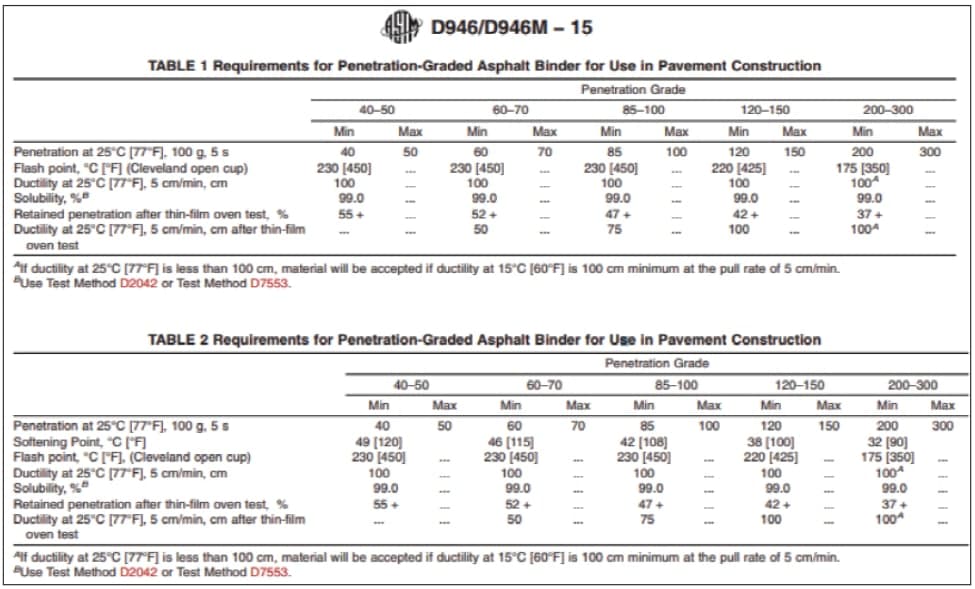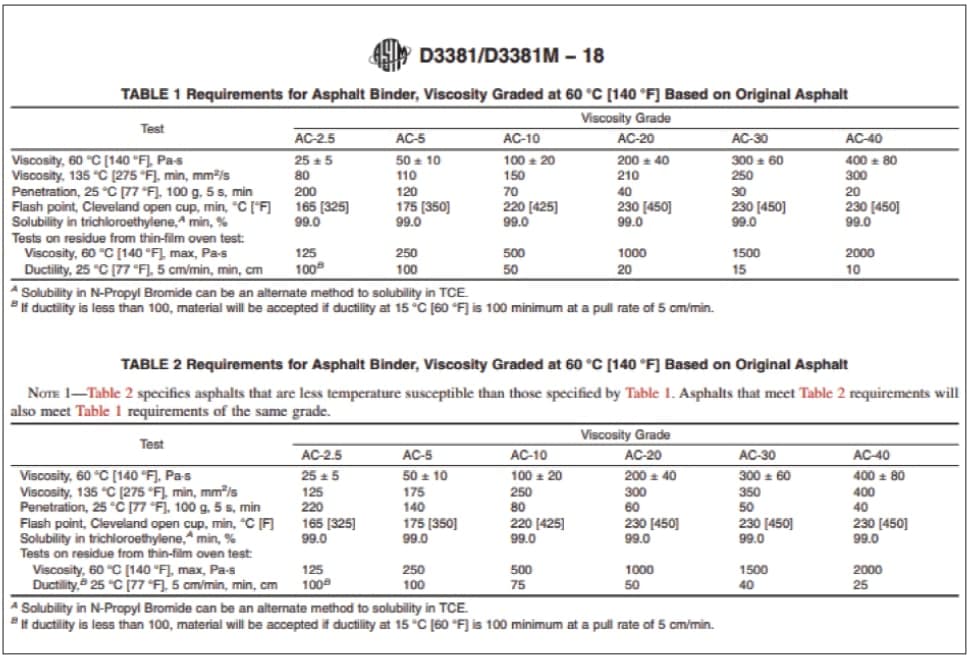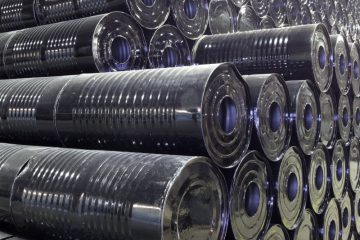Bitumen has a wide usage in construction of roads. Though it’s one of the oldest materials in modern roads, it’s yet very popular in this industry. Main advantages of bitumen as binder in road construction industry are low production cost, its versatility of physical and rheological properties and recyclability of that.
In order to maintain the best adhesion in asphalt production, it’s essential to grade bitumen based on certain physical properties. Different methods and grading systems has been evolved during the time simple subjective inference to involving cumbersome test procedure-based classifications.
Bitumen Penetration Grading System
In 1888 penetration test machine was introduced which became the principal means of measuring and controlling consistency of bitumen at 25°C in 1910 in USA after several modifications. This temperature was selected as the average ambient temperature in a year. American Society for Testing and Materials (ASTM) Committee D04 on Road and Paving materials adopted the grading of bitumen by penetration test at 25°C. The first bitumen specification implemented by the American Association for State Highway and Transportation officials (AASHTO) in the USA dates back to 1931.
In penetration grading system, bitumen is considered as a semi-solid material. Tests included penetration and ductility; both were used at 250C. There are two main reasons that these tests can be faulty:
– These tests are naturally empirical and can only give index properties.
– There is no real control on temperature sensitivity as related to pavement conditions.
Penetration grading include tests at 25°C, but there is no measure of temperature sensitivity and performance of bitumen, so many bitumen of various temperature sensitivity and performance could fit in the same grade.
Bitumen Viscosity Grading System
The viscosity grading system was first introduced in the early 1960s. In this new grading system, the absolute viscosity at 60°C, and the kinematic viscosity at 135°C were included other than penetration at 25°C (ASTM D3381).
This grading system was developed by considering aged bitumen residue grading in 1960. A thin film oven test was used to measure ageing of bitumen. This viscosity grading system was not widely welcomed mostly due to reasons such as the continuous lack of low temperature properties, the wide acceptance limits and the lack of long-term ageing procedure.
Maximizing fuel production in early 1970s resulted in discovering new resources. It led to diversified sources and refining procedures and amendments were needed to viscosity grading system. The amendments of specifications included temperature susceptibility, shear susceptibility, primitive rheological properties, and other compositional characteristics.
Amendments made to bitumen viscosity grading system was making major problems for bitumen suppliers. More than 35 different specifications were generated in mid 1980s. This confusing grading system caused in initiating Strategic Highway Research Program (SHRP) in 1987 which meant to develop a national uniform bitumen specification. They focused on physical properties that describe the visco-elastic nature of bitumen. In 1991 the first version of performance grading system based on fundamental rheological properties was introduced.
Taking a closer look at different grades of viscosity graded bitumen, different applications will show up. These applications are categorized by the grades as it follows:
– VG 10: This grade is the softest grade and have specification close to 80-100 penetration grade. It’s mostly used in very cold climate. It also used in spraying applications and also in manufacturing of bitumen emulsion.
– VG 20: It’s mostly used for road construction in high altitude and cold climate.
– VG 30: It’s the most common grade used for heavy duty road construction. It can be interchangeably used instead of 60/70 penetration grade bitumen.
– VG40: This grade is close to 30-40 penetration grade in properties and usage. Due to its higher viscosity, stiffer Bitumen mixes can be produced to improve resistance to shoving and other problems associated with higher temperature and heavy traffic loads.






